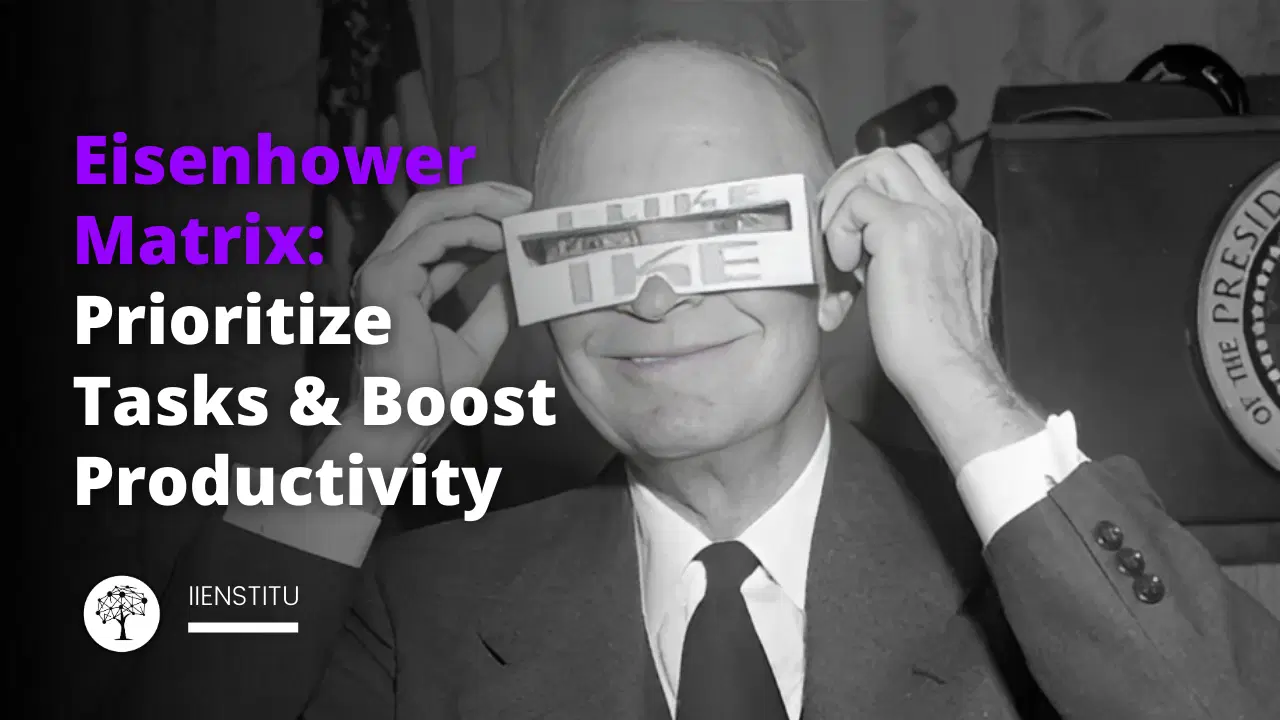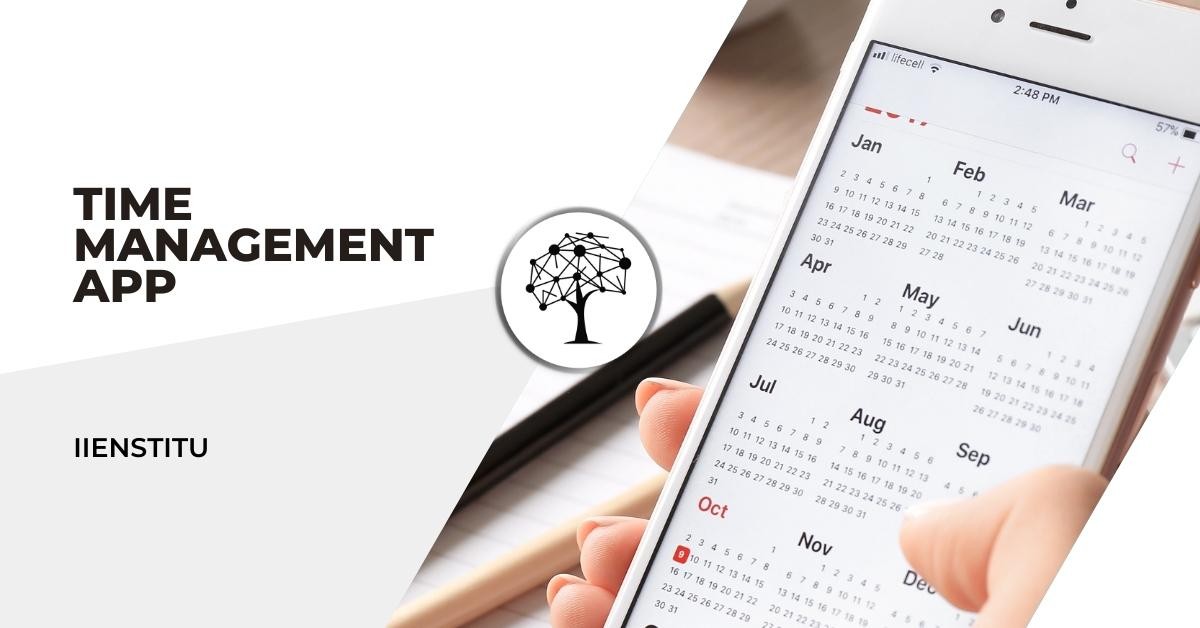
The Eisenhower Matrix, also known as the Urgent-Important Matrix, is a powerful time management tool that empowers you to prioritize tasks based on their importance and urgency.
This productivity method was inspired by Dwight D. Eisenhower, the 34th President of the United States, renowned for his exceptional time management skills.
Article Index:
Determining Urgency and Importance: Making Sense of Your Tasks
4 Expert Tips for Prioritizing Tasks with the Eisenhower Matrix
Determining Urgency and Importance: Making Sense of Your Tasks
The challenge often lies in differentiating between what is urgent and what is essential. Critical tasks demand immediate attention and have consequences for non-completion, while important tasks contribute to our long-term values and personal goals.
The Eisenhower Matrix assists in making this distinction clear, helping you to avoid the common pitfall of mistaking urgency for importance.
Demystifying the Four Quadrants of the Eisenhower Matrix
The Eisenhower Matrix is divided into four quadrants, each representing a unique combination of urgency and importance.
Quadrant 1: The "Do" Quadrant - Urgent and Important Tasks
Tasks in the first quadrant are both urgent and important. These are high-priority tasks that demand immediate attention and action.
Quadrant 2: The "Schedule" Quadrant - Important but Not Urgent Tasks
Quadrant two holds tasks that are important but not necessarily urgent. These tasks should be scheduled for later completion.
Quadrant 3: The "Delegate" Quadrant - Urgent but Not Important Tasks
This quadrant is for tasks that are urgent but not important. Such studies can be delegated to others when possible.
Quadrant 4: The "Delete" Quadrant - Neither Urgent nor Important Tasks
Quadrant four contains tasks that are urgent and important. Such tasks can be eliminated or postponed indefinitely.
4 Expert Tips for Prioritizing Tasks with the Eisenhower Matrix
Color-code Your Tasks: Adding color coding to your tasks can visually distinguish between different task categories, making identifying and prioritizing them easy.
Limit Tasks to 10 per Quadrant: Limiting the number of tasks to 10 per quadrant allows you to keep your to-do list manageable and avoid feeling overwhelmed.
Make Personal and Professional To-Do Lists: Keep your work-life balance in check by creating separate Eisenhower Matrices for personal and professional tasks.
Eliminate, then Prioritize: First, eliminate tasks in the "delete" quadrant, then prioritize the remaining tasks in the other three quadrants.
Eisenhower Matrix in Practice: Examples of how to use
To illustrate, let's consider an example:
Urgent and important tasks (Quadrant 1) might include a project deadline due tomorrow.
An essential but not urgent task (Quadrant 2) could be planning a future business strategy.
An acute but unimportant task (Quadrant 3) might be answering phone calls, which can be delegated.
And finally, functions that are neither urgent nor important (Quadrant 4) include casual web browsing, which should be minimized or eliminated.
Quadrant 1: Urgent and Important (Do)
This quadrant includes tasks that need immediate attention. These activities are usually tied to essential projects or outcomes that must be dealt with immediately.
Example: You're a marketing manager, and a campaign scheduled to launch today has run into technical issues. Fixing these issues is urgent (it must be resolved now) and essential (the movement is critical to meeting this quarter's revenue goals).
Quadrant 2: Not Urgent but Important (Schedule)
Tasks in this quadrant contribute to your long-term goals and values but must be more time-sensitive. These activities often revolve around planning, building relationships, and self-improvement.
Example: You're a software developer. Learning a new coding language, like Python or JavaScript, is essential for your career growth, but it's not urgent. This task should be scheduled into your calendar, an hour a day or a few hours weekly.
Quadrant 3: Urgent but Not Important (Delegate)
These are tasks that are time-sensitive but won't help you achieve your long-term goals or values. These tasks should be delegated.
Example: You're an entrepreneur. Answering every email or call might be urgent (people expect quick replies) but not necessarily crucial to your long-term success. This kind of task could be delegated to an administrative assistant.
Quadrant 4: Not Urgent and Not Important (Delete)
These activities aren't time-sensitive and don't contribute to your long-term goals or values. They should be minimized or eliminated where possible.
Example: You're a student. Binge-watching a new series on Netflix is neither urgent nor essential. It doesn't contribute to your academic goals and can be delayed or removed from your to-do list.
Utilize Task Management Tools to Create Your Eisenhower Matrix
There are numerous digital tools and apps available that can aid in creating and managing your Eisenhower Matrix. These tools can help organize your tasks, color-code them, and even set schedule reminders.
Utilizing such tools can make the task management process more streamlined and efficient, maximizing productivity.
The Eisenhower Matrix offers an efficient framework for prioritizing tasks based on urgency and importance. Implementing this tool can drastically improve productivity, allowing you to focus on what truly matters.
The Eisenhower Matrix is a robust tool that can revolutionize your time management. By understanding and applying this matrix, you can become more focused, productive, and efficient. However, like any other strategy, mastering it requires practice and patience.
To further your knowledge and skills in time management, we highly recommend enrolling in our comprehensive time management course.
Related course: Time Management Course
Because remember, managing time effectively is not just about doing more but about doing what matters most. Harness the power of the Eisenhower Matrix and embark on your journey towards unparalleled productivity today!


